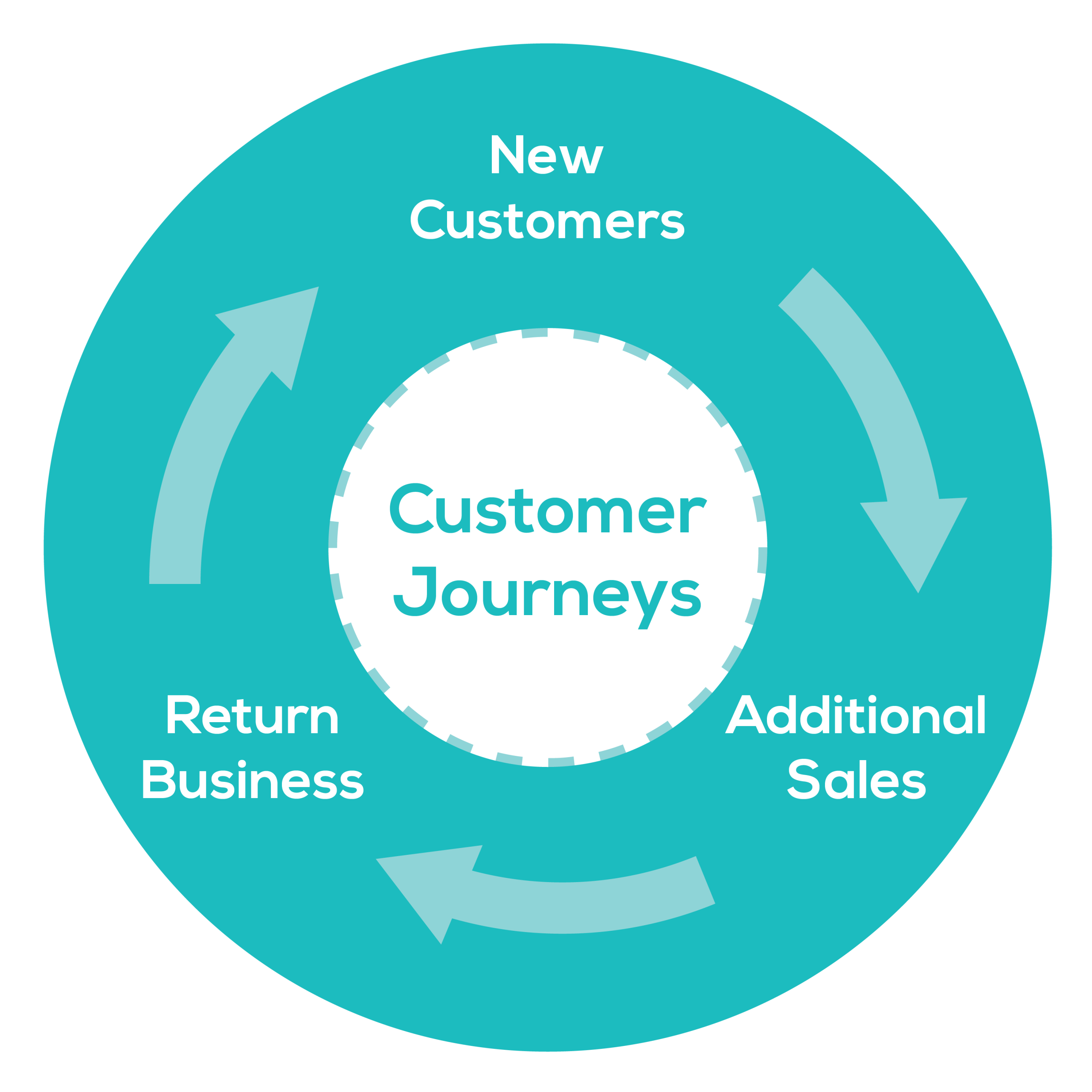Gross Margins Or Net Profit Per Hour? Here’s How to Make More Profit
January 14, 2021 | Read: 9 minutes

How can you make this year the most profitable ever for your business? The answer may lie in net profit per hour. Let’s jump in!
For a variety of reasons, many larger field service businesses can find themselves either in a slump or, worse, realizing that they weren’t making as much as they thought initially.
A company can easily grow at first to hire dozens of technicians and work thousands of jobs, only to find out the hard way that they were only making enough.
It all depends on how you measure success. Is it the number of customers you have? The number of employees? Both are valid measurements and worthy of pursuing as goals, but at the end of the day, how much money you’ve got in the bank will never lie.
This is why we sat down to talk to Ruth King, an HVAC licensed business consultant, specializing in helping field service businesses who struggle with their finances.
“If you want to grow your revenue, this is what you should look at: who your customers are, who your customers could be, and how accurate your financial statements are.”
Ruth King
So let’s break it down!
Who are your customers?
Creating a detailed customer persona, talking to people who’ve hired you in the past, and understanding what their issues are is business 101. After all, how can you fulfil someone’s needs if you don’t know what these are?
But it’s time to take it one step further if you want to increase your contracting business revenue:
One of the things that would be really important to do is to go look at your customer base and find out how many people are there, who have not done business with you in the past 18 months to five years.

Repeat business is something we often go back to because it’s one of the most reliable sources of income you can get. Together with new customers and additional sales, it makes up the bulk of your opportunities to grow.
Re-booking customers isn’t just about convincing people to hire you again.
As you grow your service business, whether you’re working in plumbing, HVAC, electrical, fire & security or offer a little bit of each, you’ll find that you don’t have nearly enough time to spend chasing customers to re-book.
So automating the process and making it as easy as possible becomes paramount in order to keep the wheel spinning. It’s especially helpful to have templates and resources to hand to speed things up, too. That can include a standard invoice template, or perhaps an electrical invoice template or plumbing invoice template, depending on your business.
Combined with automated solutions, you’ll have a far easier time managing your finances.

Who else could be your customer?
You know, if most of your customers were in the restaurant industry, you had a problem in 2020.
So my hope and goal is that no one customer or one industry makes up more than 20% of your customer base from now on.
It was a really tough lesson to learn for a few of my clients who actually made most of their income from single customers who were, unfortunately, badly hit.
Accurate and transparent financial statements are key
Knowledge is power, after all. If you’re a field service business owner who can rattle off exactly how much money you’re making each day, how much of it is profit, what are your overheads, and where you plan to direct re-investments, then any challenge, no matter how big, is only going to a bump in the road for you.
Why? Because you know how far you can stretch, where to cut costs without sacrificing customer satisfaction or employee wellbeing, and how to do it. You’re pretty much set to weather the bad times. But, for example, let’s say you charge $129 to service a heating pump. You set this price because your competition also charges $129. Now you want to slash your prices by $15 to attract more new customers, which is a legitimate strategy when you need to boost your cash flow quickly.
However, without a good grasp of your financials, you might end up realizing that the service actually costs you $110, between materials, technician’s time, and other business overheads. You were only making $19 to begin with but if you cut the price, you’ll only be making $4 per job, which is less than minimum wage.
And that takes us to what Ruth King calls “net profit per hour” which is a great way to find out if your service business is profitable and how to improve even further:
“Is the gross margin the best success indicator for your contracting business? Not necessarily.”
Ruth King
With over 40 years of experience in the business, it’s no wonder Ruth has seen it all. Not only that, but she’s learned from every single company she’s dealt with, as well as from her own mistakes:
That’s what we used to price: gross margins. I did it too. And some of those companies were doing really well and some of them weren’t. And it was like, okay, what’s going on here? And then I realized, you know that it’s not ONLY the gross profit line, but you have to consider overheads when calculating how much money you actually have.
So I developed the net profit per hour, which really just means how much out of every billable hour drops to the bottom line, in terms of net profit. And so I asked most of the contractors that I work with at that point: What is your net profit per hour, and how much do you WANT it to be? And they give me the deer in the headlights look there.
Some business owners avoid this topic because, more often than not, they’re anxious about finding out that they’re not doing as well as they thought – which is perfectly understandable. But at the same time, it’s better to know as soon as possible if something isn’t right because you have more time to fix it. The alternative is to keep going until one day you’re simply not able to pay vendors or payroll and by then, there’s little you can do to save the business without some truly drastic measures.
How much net profit per hour should you make from your service contracting business?
The answer is simple: as much as you want. In Ruth’s experience, managers hesitate to charge the prices they want for fear of alienating customers and there’s certainly a threshold where prices can become unreasonable. This being said, with transparent financials, you know exactly how much you need to charge in order to run the business and pay rent on the office, salaries, materials, and other costs.
Normally when you’re doing a budget, you start with: This is what I want to sell. This is what I expect my direct cost to be. This is what I want my gross profit to be. And you could estimate overheads at 35%. Well, that in itself is a misnomer and Ruth truly nailed why with the following example:
For each you charge $10,000. And 35% of $10,000 is $3,500. Right? But one of those jobs takes 25 hours of labor. And the other takes 2. It’s not fair to assign both of them 35% profit. One of them used up a whole lot more labor. Which means that a whole lot more overhead has to be assigned to it than the one that had only 2 hours of labor on it.
So what I do is I consider net profit the number one priority. Then I determine your overhead cost per hour for each type of job. Since it’s the beginning of a new year, you can simply calculate what was your cost of running last year? How many billable hours did you have? Then divide the two and you have a more general net in your overhead cost per hour.
From Ruth’s experience, unless you’re a really big company, it’s going to be somewhere North of 30 or $40 an hour for the average job (although, if you want a more exact number, it would be ideal to do the maths for each type).
That’s the absolute minimum you can charge in order to cover your own costs. At this point, you’re not making any money, basically. Then you’re free to add your net profit per hour. Some managers start with $20 and work their way up, some start with $100. It’s all about your customer base (here’s where our first point really comes through!) and what they’re willing to spend. If you want to provide a premium service in expensive neighbourhoods, that obviously comes with certain price tags.
On the other hand, if you’re new in town and want to establish a customer base, it’s worth considering starting a little lower on the price scale. At the end of the day, it’s you who decides, not the competition, nor the customers.
Growing a profitable business
In the meantime, perhaps you’re wondering where to start and we wouldn’t blame you if there’s simply too much information around, making things more confusing than they need to be.
That’s why we’ve cut out the fat and left the cold, hard numbers in a neat 10-step checklist that will walk you through the process of pricing your services.
Click below to download it, together with the formulas & spreadsheets that will do the hard work of setting prices for you!

Cristina Maria
I'm here to bring you next-level strategies to the field service industry. When I'm not working on the best tips to grow your business, I'm on the lookout for sci-fi novels and cookie recipes.








